For English version click on “BEITRAG LESEN/READ THE POST” and then scroll to bottom
Unser erstes Ziel in Argentinien ist ein WU Standort, wo wir Geld holen können. In Clorinda kann ich aber nur ARS 65.000 bekommen. Da wir noch etwas Bargeld haben, führt uns unser erster Ausflug zur Laguna Blanca im Nationalpark Rio Pilcomayo. Leider können wir nur auf einem Bohlenweg zur Laguna laufen und es gibt nicht viel zu sehen. Wieder unterwegs nehmen wir den nächsten Anlauf, Bargeld zu bekommen. Im 4. Versuch klappt es dann endlich; aber auch nur, weil der Mitarbeiter der Post wissen will, wie das geht. Seine Kollegin hat schon abgewunken und gesagt, dass es nicht möglich ist. Mit Hindernissen – es ist das 1. Mal, dass er so eine Auszahlung macht und zwischendurch fällt auch noch der Strom aus – und der Hilfe eines Freundes, den er als Dolmetscher dazu gebeten hat, sind wir dann wieder gut versorgt und können direkt 2 Tanks auffüllen. Über die schnurgeradeausverlaufende RN95 geht es weiter. Unterwegs sehen wir Palmenwälder und vereinzelt kleine Bananenplantagen neben der Straße. Am nächsten Morgen geht es noch ein Stück weiter. Am Rio Tatú Piré verwandelt sich die Landschaft in ein Sumpfgebiet mit Vögeln, Kaimanen und Palmen. Immer wieder sieht es so aus, als kämen Kreisverkehre. Die entstehen immer dann, wenn mitten auf der Straße große Schlaglöcher sind, und die Autos diese dann rechts und links neben der Straße umfahren. Gegen Mittag wechseln wir auf die RN81, die zwar wenig Verkehr aber auch wenig Abwechslung bietet. Nachdem wir in Las Lomitas unsere Vorräte aufgefüllt haben, übernachten wir an der Axion Tankstelle. Am nächsten Tag geht es eintönig weiter. Wir machen früh Feierabend, weil wir an einer Tankstelle das Internet nutzen wollen. Allerdings ist gerade Stromausfall. Als der wieder da ist, kochen wir gerade und danach habe ich keine Lust mehr in das Bistro zu gehen. Abends kommen Sippie & Klaas, die wir 2019 bei den Vulkanen auf der RN40 schon getroffen hatten. Sie sind auf dem Weg nach Paraguay. Auch heute geht es auf der RN81 weiter. Die Straße und die Landschaft sind eintönig, aber diesmal sind viele Tiere auf und neben der Straße. Wir sehen Ziegen, Schafe, Kühe, Esel, Pferde, Greifvögel und Papageien (die man aber meistens erst dann entdeckt, wenn der Schwarm auffliegt). Auffällig sind auch die Schweine, die immer wieder das Bankett der Straße durchwühlen. Gegen Abend stehen tolle „Birnen-“ bzw. Flaschenbäume neben der Straße. Die Bäume verdanken ihren Namen der Form des Stammes. Der erste Stellplatz, den wir anfahren gefällt uns nicht, beim zweiten sagen uns Polizistinnen, dass wir nicht bleiben können. Also biegen wir auf die RN34 ab und fahren noch bis zu einer Tankstelle in Embarcacion. Die RN34 ist am nächsten Tag anfangs noch in schlechtem Zustand, dann kommen wir zu einem neu asphaltierten Bereich. Auch führt sie wieder schnurgeradeaus. Ein bisschen Abwechslung bieten die Zuckerrohrplantagen und ein Auf und Ab. Am Horizont tauchen die ersten Berge auf. Am Infozentrum des Nationalpark Calilegua erfahren wir, dass der Campingplatz im Park immer noch geschlossen ist. Wir fahren erst einkaufen und dann hoch zur Rangerstation. Dort sagt man uns, dass der Park schon um 17h (statt wie angeschlagen um 18h) geschlossen wird. Wir fahren wieder ein Stück zurück und beschließen, bei der Freiluftkirche „Virgen Maria de Guadeloupe“ zu übernachten. Nach einer ruhigen Nacht, fahren wir wieder in den Park. Der Wanderweg „Sendero Fantastico“ ist nur 260 Meter lang, aber ca. alle 20-30 Meter steht eine Metallskulptur. Danach laufen wir noch einen kurzen Wanderweg, der am Campingplatz losgeht. Leider sind bei beiden Wegen alle Erklärungen nur auf Spanisch. Auf dem Weg zum Monolith stoppen wir an einem Aussichtspunkt und kommen mit englischsprechenden Argentiniern ins Gespräch und unterhalten uns eine Weile. Am höchsten Punkt der Strecke (1700 MüNN) machen wir einen Fotostopp. Als wir wieder loswollen, merke ich, dass wir vorne links Öl verlieren; es tropft im Sekundentakt. Also fahren wir zurück bis zum Infozentrum, wo wir neben dem Spiel- und Fitnessplatz übernachten. Am Morgen ist von dem Ölverlust nichts mehr zu sehen und wir fahren weiter. Auf der RN34 kommen wir in mehrere Baustellen und Umleitungen. Zwei Mal fahren wir Tankstellen an, die keinen Diesel haben. Bei der YPF in Güemes herrscht Hochbetrieb und wir stellen uns bei den LKWs an. Kurz bevor wir an der Reihe sind, sagt uns ein Mitarbeiter, dass wir an die andere Zapfsäule müssen. Als wir da endlich an der Reihe sind, sagt man uns, dass es keinen ‚normalen‘ Diesel gibt. Wir tanken also den hochwertigeren. Weiter geht es dann Richtung Salta. Auf dem Weg zum Camping Municipal Xamera verfahren wir uns einmal, aber um 16:45h haben wir 4 Nächte gebucht und bezahlt und stehen auf dem Platz.
English Version (no translation of Geman text)
Our first destination in Argentina is a WU location where we can get money. In Clorinda, however, I can only get ARS 65,000. Since we still have some cash, we continue to Laguna Blanca in the National Park Rio Pilcomayo. Unfortunately, we can only go for a short walk on a boardwalk to the Laguna and there is, besides some plants, not much to see. Back on the road we try again to get cash. In the 4th attempt it finally works; but, only because the employee of the post office wants to know how it works. His colleague has already waved off and said that it is not possible. With obstacles – it is the 1st time that he makes such a payment and in between the power fails – and the help of a friend, whom he has called and who stopped by for translation, we are then well supplied again and can directly fill up 2 tanks at the next gas station. We continue on the dead straight RN95. On the way we see palm forests and small banana plantations next to the road. The next morning, we continue a bit further. At Rio Tatú Piré the landscape changes into a swamp area with birds, caimans and palm trees. Again and again, it looks as roundabouts are ahead of us. These always occur when there are large potholes in the middle of the road, and the cars then use the banquet to the right and left of the road. Around noon we change to the RN81, which offers little traffic but also little variety. After filling up our supplies in Las Lomitas, we spend the night at an Axion gas station. The next day we continue monotonously. We stop early because we want to use the internet at a gas station. However, there is a power failure. When the power is back, we are cooking and afterwards I don’t feel like going to the bistro. In the evening Sippie & Klaas, whom we already met in 2019 at the volcanoes on the RN40 arrive for the night as well. They are on the way to Paraguay. Again, we continue on RN81. The road and the landscape are still monotonous, but this time there are many animals on and off the road. We see goats, sheep, cows, donkeys, horses, birds of prey and parrots (but you usually don’t spot them until the flock flies up). Also there are pigs, which again and again rummage through the banquet of the road. Towards evening there are great „pear“ or bottle trees next to the road. The trees owe their name to the shape of the trunk. We don’t like the first overnight spot and therefore continue. At the second spot policewomen tell us that we can’t stay. So, we turn onto RN34 and drive to a gas station in Embarcacion. In the morning the first part of RN34 is in bad condition but then we reach a newly asphalted area. Again, the road leads dead straight ahead. A little bit of variety is offered by the sugar cane plantations and some hills. Finally, the first mountains appear on the horizon. At the information center of the Calilegua National Park we learn that the campground in the park is still closed. We first go shopping and then up to the ranger station. There they tell us that the park i already closes at 17h (instead of 18h as posted). We return for about 4 km and decide to spend the night at the open air church „Virgen Maria de Guadeloupe“. After a quiet night, we drive back to the park. The hiking trail „Sendero Fantastico“ is only 260 meters long, but about every 20-30 meters there is a metal sculpture. After that we walk another short trail that starts at the campground. Unfortunately, on both trails all explanations are only in Spanish. On the way to the monolith, we stop at a viewpoint and get into conversation with English speaking Argentines and talk for a while. At the highest point of the route (1700 MüNN) we stop for photos. When we plan to leave again, I notice that we lose oil in the front left; it drips every second. Therefore, we change plans and drive back to the info center, where we spend the night next to the playground and fitness area. In the morning there is no sign of oil loss and we continue. On RN34 we come into several road works and detours. Two times we stop at gas stations that have no diesel. At the YPF in Güemes it is very busy and we queue up with the trucks. Shortly before it is our turn, an employee tells us that we have to go to another pump. When it is finally our turn, we are told that there is no ’normal‘ diesel. So, we fill up with the higher quality one and continue towards Salta. On the way to Camping Municipal Xamera we get lost once, but at 16:45h we have booked and paid for 4 nights and are on the site.

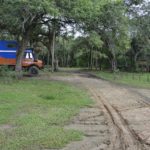
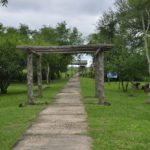



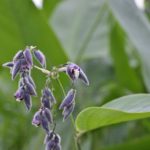

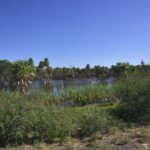

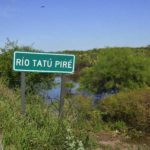


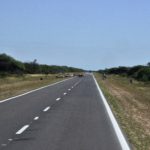


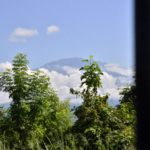






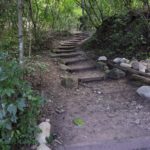





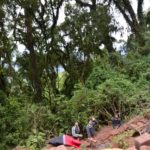


Schreibe den ersten Kommentar